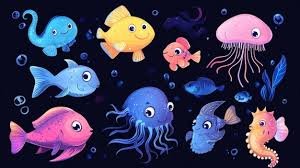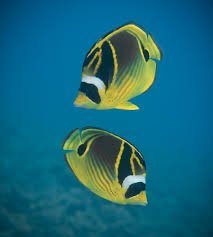The dragon (龙, Lóng) is one of the most revered and enduring symbols in Chinese culture, representing power, wisdom, and balance. Beyond its association with imperial authority and celestial protection, the dragon is also a potent symbol of longevity (长寿, chángshòu) and eternity (永恒, yǒnghéng).
From ancient mythology to traditional art and spiritual beliefs, dragons are depicted as ageless, immortal beings that transcend time. They embody the continuous flow of life, the unending cycle of the universe, and the harmony between nature and existence. As a result, Chinese society has integrated dragon imagery into festivals, architecture, spiritual practices, and folklore to signify endurance, longevity, and eternal prosperity.
In this article, we explore the profound role of dragons in the symbolism of longevity and eternity in Chinese culture, highlighting their influence in mythology, religious beliefs, imperial traditions, and artistic representations.
1. The Dragon as an Immortal Creature in Chinese Mythology
The Eternal Nature of the Dragon
Unlike Western dragons, which are often mortal and can be slain, Chinese dragons are immortal beings. They do not age, weaken, or perish, reinforcing their association with timelessness and perpetual life. In many myths, dragons are believed to live in the heavens, the deep seas, or sacred mountains, where they guard secrets of longevity and cosmic balance.
The dragon’s ability to control water, wind, and celestial forces also signifies its connection to the ever-flowing, unending essence of life. Just as rivers and tides never stop moving, the dragon embodies the continuous and boundless nature of existence.
The Legend of the Dragon and the Longevity Peach
One of the most famous myths associated with dragons and longevity is the story of the Dragon and the Longevity Peach (蟠桃, Pántáo).
- In Chinese mythology, the Peaches of Immortality grow in the garden of the Queen Mother of the West (西王母, Xī Wáng Mǔ).
- These peaches ripen once every 3,000 years and grant eternal life to those who eat them.
- A divine dragon is often depicted as guarding the peaches, ensuring that only those worthy of immortality can obtain them.
- Some legends even tell of wise elders and celestial beings riding dragons to the garden to seek the secret of eternal life.
This story emphasizes the role of dragons as protectors of longevity and conduits between the mortal and immortal realms.
2. Dragons in Daoism and the Quest for Immortality
Dragons as Symbols of Spiritual Transformation
In Daoist philosophy, the dragon is closely linked to the quest for immortality (仙, xiān). Many Daoist immortals (仙人, xiānrén) are believed to have ridden dragons to ascend to the heavens, symbolizing their escape from mortality and entry into eternal existence.
The process of spiritual refinement and transcendence in Daoism often uses the imagery of dragons to represent the transformation of the soul from a limited mortal state to an eternal celestial one.
The Dragon’s Role in Daoist Alchemy
Daoist practitioners of inner alchemy (内丹, nèidān) sought to achieve physical and spiritual longevity through practices such as breathing exercises, herbal medicine, and meditation. The dragon was a powerful metaphor for the transformation of Qi (气, vital energy) within the body, guiding practitioners toward immortality and enlightenment.
- The Golden Dragon (金龙, Jīn Lóng) was a symbol of the refined Qi that allowed sages to live hundreds of years or even become immortal.
- Some Daoist texts describe immortal sages riding dragons into the sky, signifying their successful transcendence beyond time and physical decay.
3. Dragons in Chinese Imperial Traditions of Longevity
The Emperor as the “Dragon Son” and the Pursuit of Longevity
In ancient China, the emperor was regarded as the “Son of the Dragon” (龙子, Lóngzǐ), an extension of divine power and eternal rule. Many emperors sought immortality, commissioning elaborate palaces, rituals, and alchemical experiments to prolong their lives.
- Emperor Qin Shi Huang (秦始皇, Qín Shǐ Huáng), the first emperor of China, famously sent expeditions to search for the Elixir of Immortality, believing that consuming dragon-related medicines could grant him eternal life.
- Many imperial thrones and robes were adorned with golden dragon motifs, symbolizing the emperor’s undying power and connection to eternal forces.
- Dragon-shaped jade amulets were often buried with emperors to ensure their souls could ascend to the heavens and live eternally.
Dragon Motifs in Imperial Longevity Celebrations
The Dragon Dance and Dragon Boat Festival were not only celebratory events but also symbolized the emperor’s wish for enduring prosperity and a long reign.
- Dragon-shaped decorations were common in birthday ceremonies for emperors, reinforcing their association with longevity and the heavens.
- The Forbidden City in Beijing features countless dragon carvings and paintings, emphasizing the emperor’s connection to eternal rule and divine blessing.
4. Dragons in Chinese Art and Feng Shui: The Flow of Eternal Energy
Dragons in Longevity Symbols and Feng Shui
In traditional Chinese art and Feng Shui, dragons are often combined with other longevity symbols to attract health, fortune, and an unending life cycle.
- The Dragon and the Crane (龙鹤, Lóng Hè) symbolize a long and harmonious life, with the crane representing peace and longevity and the dragon representing strength and vitality.
- The Dragon and the Turtle (龙龟, Lóng Guī) are a powerful Feng Shui symbol of eternal stability and endurance. The turtle, known for its long lifespan, and the dragon together represent resilience and unbreakable life force.
- The Dragon and the Pine Tree symbolize immortality, as pine trees remain evergreen throughout all seasons, just as dragons are eternal beings.
Dragon Statues and Talismans for Longevity
Many Chinese families place dragon statues in their homes to ensure a continuous flow of positive energy (Qi) and to bring good health and long life. Wearing dragon-shaped jade pendants is also believed to protect against illness and promote longevity.
5. Dragons in Modern Chinese Celebrations of Longevity
Even today, dragons continue to play a significant role in Chinese longevity traditions.
- Elderly birthday celebrations often feature dragon imagery to wish for a long and fulfilling life.
- Chinese New Year dragon dances symbolize the blessing of health, wealth, and endless prosperity for the coming year.
- In traditional Chinese medicine, some herbal formulas are named after dragons to enhance vitality and longevity.
Conclusion
The Chinese dragon is not merely a mythical creature but a symbol of eternity, wisdom, and unending life. From ancient legends of immortality to imperial traditions and Feng Shui, dragons have been woven into the fabric of Chinese culture as a representation of longevity and cosmic balance.
Whether in mythology, religion, art, or modern celebrations, the dragon remains an enduring emblem of perpetual strength and the timeless flow of life, ensuring that its influence will continue for generations to come.







